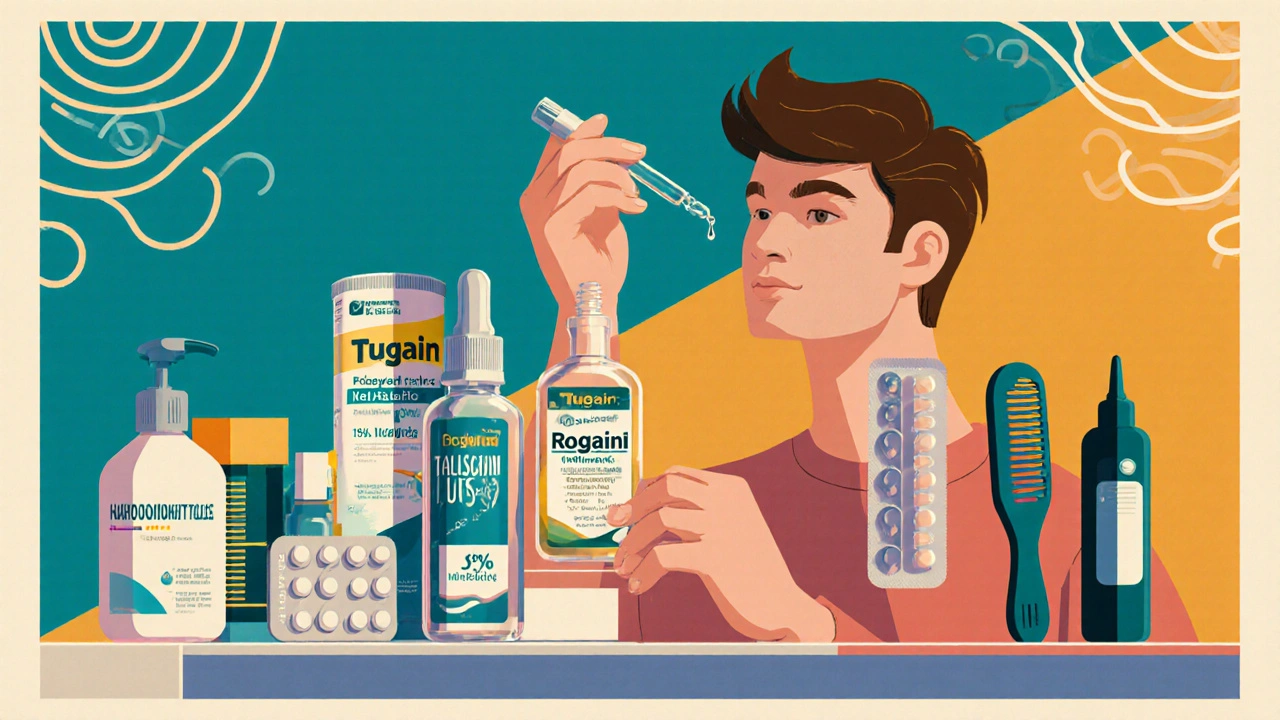Hair Loss Treatment: What Works and How to Choose
When dealing with hair loss treatment, a set of medical and cosmetic approaches aimed at slowing or reversing hair thinning. Also known as alopecia therapy, it helps many people regain confidence. Common causes include hormonal shifts, genetic predisposition, stress, and nutritional gaps, so a good plan often mixes medication, lifestyle tweaks, and professional procedures. One of the first‑line medicines is Minoxidil, a topical vasodilator that prolongs the growth phase of hair follicles, which you apply twice daily to the scalp. Another staple is Finasteride, an oral 5‑alpha‑reductase inhibitor that lowers DHT levels, the hormone most responsible for male‑pattern baldness. Together, these drugs address the hormonal and vascular sides of hair loss, giving most users a noticeable slowdown in shedding and, in many cases, modest regrowth.
Procedural Options and Emerging Therapies
When topical or oral meds aren’t enough, many turn to surgical and regenerative solutions. Hair transplant, a procedure that moves healthy follicles from a donor area to thinning zones offers a permanent fix for those with advanced loss, especially when donor hair is abundant. The technique has evolved from strip harvesting to follicular unit extraction (FUE), which leaves minimal scarring and faster healing. For those seeking a less invasive route, PRP therapy, an injection of platelet‑rich plasma that delivers growth factors to stimulate follicle activity is gaining popularity. PRP sessions usually require three monthly injections followed by maintenance every 4‑6 months, and studies show it can improve density when combined with Minoxidil or Finasteride. Both options focus on revitalizing the hair‑producing environment, whether by adding new follicles or boosting the health of existing ones.
Beyond drugs and procedures, everyday habits play a big role. A diet rich in iron, zinc, and biotin supplies the building blocks for strong shafts, while avoiding excessive heat or harsh chemicals protects the follicle’s outer sheath. Scalp massage can increase local blood flow, complementing Minoxidil’s vasodilating effect. Some people also benefit from nutraceuticals like hair loss treatment‑focused supplements that contain saw palmetto, pumpkin seed oil, or caffeine, all of which have modest evidence for DHT reduction or growth‑phase extension. Understanding how DHT, inflammation, and poor circulation interact helps you pick the right mix of products and professional care. Below you’ll find a curated collection of articles that dive deeper into each option, compare effectiveness, and share practical tips for getting the most out of your hair‑restoring journey.
Tugain Minoxidil vs Alternatives: Detailed Comparison
A thorough side‑by‑side look at Tugain Minoxidil versus finasteride, Rogaine, ketoconazole shampoo and laser therapy, covering how they work, costs, side effects and best use cases.
Read moreDutasteride (Dutanol) vs Alternatives: Efficacy, Safety & Choosing the Right Treatment
A detailed comparison of Dutasteride (Dutanol) with finasteride, minoxidil, and herbal options, covering efficacy, side effects, costs, and how to choose the right treatment.
Read more

